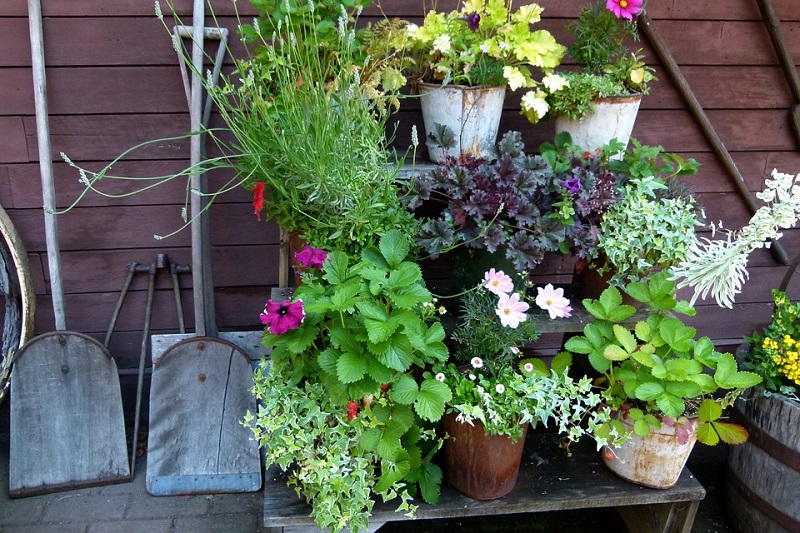If you live in a house with a large garden where your pet can run and exercise, you will be happy to see the pets roam freely. Also, most of the time you will stay in the backyard with your pet.
It is important for indoor animals, such as cats and dogs, to spend time outdoors, but the owner should not show a generous attitude. There are various threats in the garden or backyard that can harm the health of your pet. The following are the subjects to be aware of because they can affect the health of your pet.
mulch
Mulch is covered on the soil to preserve soil moisture and improve nutrition. But mulch made with cacao seeds can be harmful to pets. This type is made of discarded cacao seeds. Chocolate by-products contain theobromine and caffeine. When a pet is fed high-concentration theobromine and caffeine from a mulch made from cacao seed, toxicity may cause vomiting and diarrhea, irritability, abnormal heart rate, seizures, and other deaths. Because the type of byproducts used in mulch can not be easily identified, mulch is best avoided in the garden.
Snail and Snail Bait
Small creatures in the garden may use snail baits to kill snails. Methaldehyde, a harmful element in snail pesticides, is very dangerous to dogs and cats because it is highly toxic. If a puppy or cat eats such ingredients, it will suffer from pain, vomiting, seizures, and fever. The bait is mainly sold in the form of feed, granules, flour and liquid. Owners should avoid using such a pet if they want to play in the backyard.
compost
Compost is an excellent fertilizer for plants. This is a natural ingredient that makes the soil fertile, but it should stop pet access to compost. Compost is an organic matter that decomposes with time, and mold begins to grow. If a pet is composted, it will cause symptoms within 30 minutes due to mold. Composted pets can cause anxiety, as well as symptoms of breathing, vomiting, and other seizures.
Flowers and plants
Flowers and plants seem purely innocuous and harmless, but they can expose your pets to danger. Before you grow a new flower or plant, you should consult your veterinarian or gardener to find a pet safe breed. In addition, you should buy a breed that does not have a problem even if you eat it in preparation for the safety of your pet. If you want to grow your plants in your home, you should make sure your pets are inaccessible.
 |
| ▲ Backyard flowers and plants can harm pets (Source: Pixar Bay) |
Fertilizer
There are kinds of dangerous fertilizers in pets. Blood, bone meal, iron powder, and iron in fertilizers are extremely harmful to dogs. If a puppy eats a fertilizer, it creates stones in the stomach and blocks the gastrointestinal tract, which can lead to severe pancreatitis. If a pet is fed a fertilizer containing a high concentration of iron element, it can cause iron poisoning.
fence
Being a fence installed to keep pets safe can cause injury to pets. If a pet tries to hide through a small hole, it can be a problem and it can get hurt. Therefore, it is advisable to install wire mesh or chicken fence fences at a depth of 6 inches to prevent pets from digging and escaping.
Wood carving
Puppies can play with pieces of wood until they swallow small pieces of wood. A piece of wood may be stuck in the mouth of a dog, injuring the stomach, or getting constipated. Therefore, toy dogs should be used when freely releasing and playing dogs in the backyard. Dogs exposed to wood chips are potentially at risk of injury. If the puppy eats a lot of things that are not food, consult a veterinarian. It may be a behavioral disorder called a transplant.
Sun
If the outdoor is too humid, pet exposure to the sun can cause problems. Pets can get heatstroke or fever, which can lead to long-term abnormalities and can lead to death if serious. Symptoms of heat stroke and fever include anxiety and dyspnea. If the puppy shows these symptoms, it takes only 20 minutes to get to the worst. So make sure you have a shady place where you can rest your pet in the backyard and always drink water. And you should refrain from going out during the peak hours of sunshine.
![[Pets] Dangers in my garden, pets can get hurt ?! pets dangers in my garden pets can get hurt](https://moontore.com/wp-content/uploads/2019/02/pets-dangers-in-my-garden-pets-can-get-hurt-1200x700.jpg)


